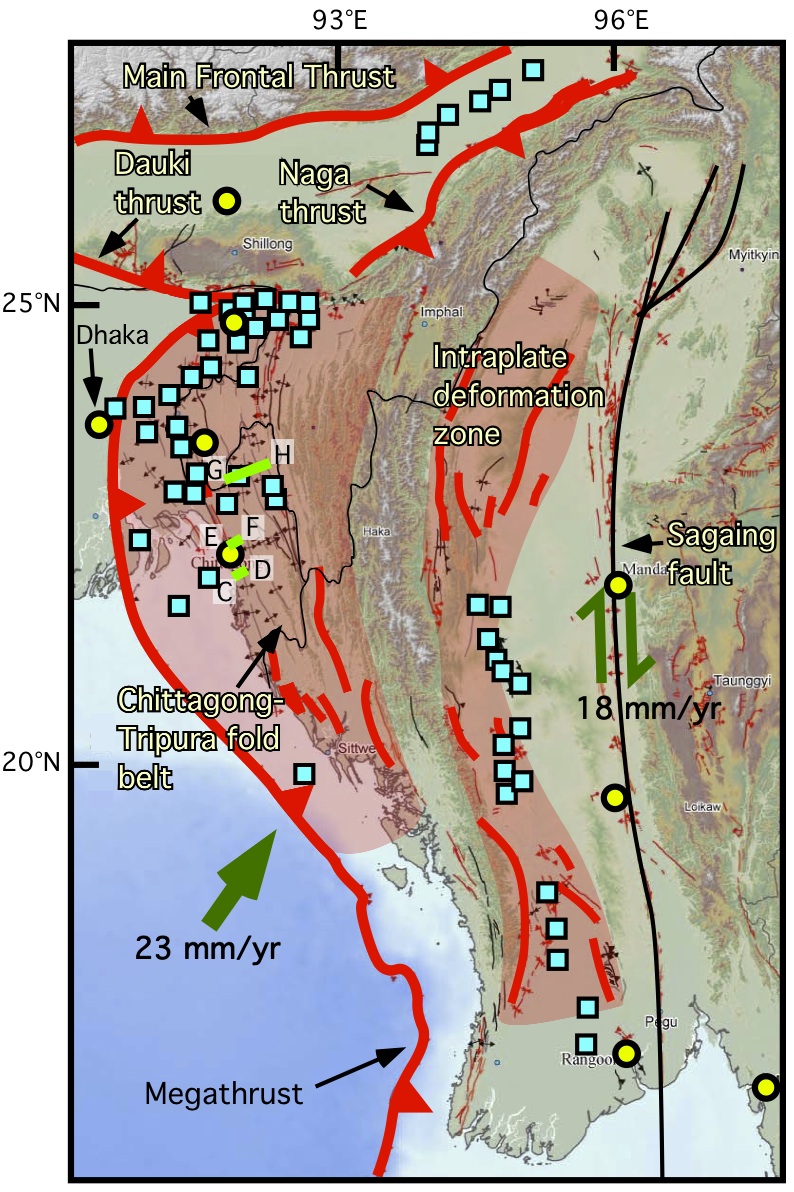Project Overview
The second-largest country in Southeast Asia, Myanmar, is home to over 60 million people. This country lies in the complex boundary zone on the eastern edge of the Indian plate. Due to its political isolation, the country has been largely inaccessible to the western world for half a century (military rule from 1962-2011). Given that plate tectonics, the foundation on which modern earthquake science relies, only gained acceptance in the 1960s, little is known about the geology of this region or its related hazards.

A general election in 2010 led to a more democratic government being installed in Myanmar in 2011. This change in leadership has led to an opening of some doors to science, and is already accelerating opportunities for research and hazard mitigation in this region. The first steps towards outlining seismic hazards have been taken by scientists at the Earth Observatory of Singapore (e.g., Wang and Sieh et al., 2011, Wang and Sieh et al., in prep), in collaboration with scientists within Myanmar; they have begun to map the active structures in this region. In particular, they have measured a slip rate on the north-south-trending strike-slip Sagaing fault of 11-18 mm/yr. Although extremely fast, this slip accounts for only ~50% of the differential movement between the Burma plate to the west and the Sunda plate to the east, implying that a number of other, active structures must exist in this region. They have begun to map these other structures based on satellite imagery, using geomorphic indicators of active deformation (Figure 6). Such structures include a large band of contractional deformation termed the Intraplate Deformation zone.
Combining this initial mapping of the Intraplate Deformation zone in a 3D environment with seismicity records (which are available for the last several decades) will allow me and my team to develop an initial 3D fault model to support continued research in this region. In addition, this area contains important reserves of oil and gas that extend along the trend of the Intraplate Deformation zone, so industry data should be available as well.
The current political change in Myanmar provides a tremendous opportunity to advance scientific research and mitigate hazard. This political change also makes these efforts to constrain seismic hazard even more critical, as a large, damaging earthquake in Myanmar could potentially derail this burgeoning democracy. Maintaining this nascent democratic and developmental impetus is important for improving the political and economic stability of this region, as well as improving the lives of the 60 million people who live in Myanmar.